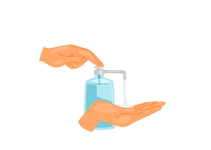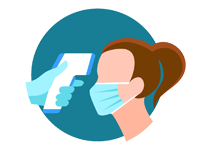Capsaicin
Introduction
Capsaicin is a naturally occurring compound derived from chili peppers, widely known for its pain-relieving properties. It is commonly used in topical formulations like creams, gels, and patches to alleviate pain associated with conditions such as arthritis, muscle strains, and nerve pain. Capsaicin works by affecting pain signals in the body, providing relief when applied to the skin. It is a popular ingredient in many over-the-counter and prescription pain-relief products due to its effectiveness and localized action. This composition is suitable for individuals seeking a non-oral, topical solution for managing mild to moderate pain symptoms.
Medicine Not Available for Capsaicin
Uses of Capsaicin
- Relief from joint pain caused by osteoarthritis or rheumatoid arthritis
- Management of muscle aches, back pain, and sprains
- Treatment of nerve pain like postherpetic neuralgia (shingles)
- Supportive care in diabetic neuropathy
- Used in sports injuries for localized muscle pain
How Capsaicin Works
Capsaicin works by desensitizing sensory neurons. It binds to the TRPV1 receptor in the skin, which is responsible for transmitting pain signals. Initially, it may cause a burning sensation, but repeated application reduces the intensity of pain signals, providing relief from chronic and acute pain over time.
Benefits of Capsaicin
- Provides targeted pain relief without systemic side effects
- Non-addictive and non-opioid alternative
- Available in easy-to-use topical forms
- Reduces nerve pain effectively with consistent use
- Helps improve mobility by reducing joint pain
How to Take Capsaicin
Capsaicin should be applied directly to the affected area as a thin layer. Gently rub the cream or gel into the skin 3 to 4 times daily or as directed by a healthcare provider. Wash your hands after application unless treating hand pain. Avoid contact with eyes, nose, and broken skin. It may take several days of regular use for full pain relief.
Type of Dosage Available
- Cream
- Gel
- Topical Patch
- Ointment
Side Effects of Capsaicin
- Mild burning or stinging at the application site
- Redness and skin irritation
- Dryness or itching
- Severe burning sensation (rare)
- Allergic reactions like rash or swelling (rare)
Safety Advice
- Do not apply to broken or irritated skin
- Avoid contact with eyes, mouth, or open wounds
- Wash hands thoroughly after use
- Not recommended for children without medical advice
- Consult your doctor before use if pregnant or breastfeeding
Frequently Asked Questions (FAQs)
Q: How long does it take for Capsaicin to relieve pain?
A: Pain relief usually begins after a few days of consistent application, with maximum relief experienced in 1 to 2 weeks.
Q: Can I use Capsaicin daily?
A: Yes, it can be used 3-4 times daily unless otherwise directed by your doctor.
Q: What should I do if I experience burning after applying Capsaicin?
A: A mild burning sensation is normal. If it's too intense, wash the area with soap and water. Avoid hot showers immediately after application.
Q: Can I apply Capsaicin before exercise?
A: Yes, it can be used before physical activity to reduce pain, but ensure it's fully absorbed and your skin is dry.
Q: Is Capsaicin safe for long-term use?
A: Yes, when used as directed, it is considered safe for extended periods. Always follow medical advice for chronic use.
Download India's most affordable pharmacy app
- Compare with medicine prices
- Save upto 90% on your medicine bills

Temperature Controlled storage and delivery

Regular Sanitization

Disinfected Packaging









 Added!
Added!